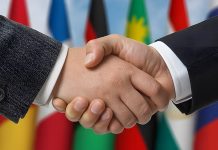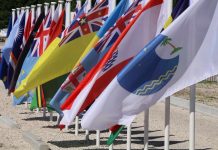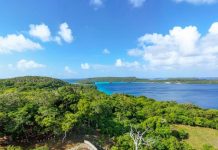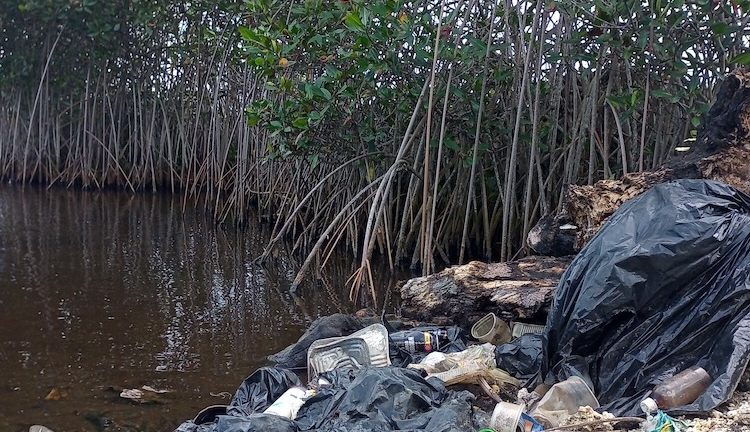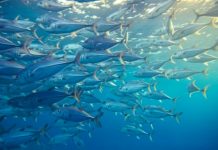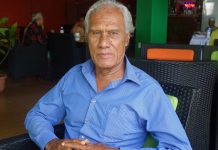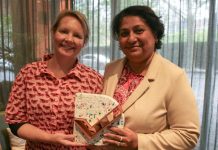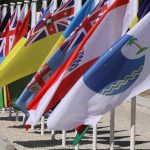By Malia Kavai
Ocean currents across the vast Pacific Ocean are bringing plastic wastes to Tonga. This is the warning from two visiting scholars from New Zealand.
The two scholars, Professor Palatasa Havea from Massey University and Dr Bridie Allan, a lecturer at Otago University, gave a public talk at the University of the South Pacific (USP) Tonga Campus recently.
One of the issues that they emphasise is how plastic waste affects the marine environment.
They both confirmed that this is a global issue, but at the same time, the Pacific suffers the most, especially their marine areas.
One of the reasons they visited Tonga with their team was to do a project between the oceans of Mangia and Ta’anea on Vava’u Island to observe what they should do to bring back organisms in the marine environment, such as fish and many others.
Tertiary Institutes and Tonga National University were fortunate to also welcome Dr. Allan and Prof. Havea and their team, eager to hear more regarding such an important topic.
How does plastic pollution affect the marine environment?
“Other nations produce pieces of pollution a lot of the time” said Dr Allan speaking at the public forum. “Increasing pieces of pollution isn’t necessarily due to the bad habits of the inhabitants of people that live on lands. It’s also just coming out of the ocean. Different oceanic currents bring plastic from places like the North Pacific, the South Pacific, the East and West and deposit it in those small white island nations”.
Professor Havea added: “The world overproduces (a lot of) plastics, and everything that is made is plastic; when we finish using plastics, it will be considered waste. The majority of these wastes go straight to the ocean, where the currents and waves spin them, and the result ends up on isolated islands like Tonga and other Pacific Islands.”
“The harmlessness of these plastics to the ocean means that fish may consume them, and people can be poisoned when they consume them(fish)”, Prof. Havea confirmed. “There is a major concern that plastic waste affects people and the environment”.
Plastics Consumed by Fish
The world produce over 380 million tons of plastic every year, and some reports indicate that up to 50% of that is for single-use purposes – utilized for just a few minutes – and then dumped somewhere, according to Plastics Oceans. It’s estimated that more than 10 million tons of plastic is dumped into our oceans every year, and needles to say, much of this consumed by fish that is ultimately eaten by humans, as Prof Havea noted.
A report published in 2021 by an ecologist at Stanford University’s Hopkins Marine Station notes that the consumption of plastic by marine animals is an increasingly pervasive problem, with litter turning up in the bellies of wildlife that includes fish. With billions of people around the world relying on seafood for sustenance and financial security, this research, published in the journal Global Change Biology, warns that there is a growing number of species eating plastic.
“Fish are a really good species to track the flow of plastic pollution through marine ecosystems,” said the research head of the team at Standford University, Matthew Savoca.
What should be done to reduce Plastics?
Dr Allan clarified that Rapanui (a Chilean dependency in the eastern Pacific Ocean) has the highest number of plastic pollutions in the Pacific.
There are also other issues, such as global warming, ocean acidification, and many others.
However, Dr Allan said, “in Tonga, there’s a lot of community groups that are trying to reduce the impacts of plastic pollution, which is awesome, and I think that’s where it starts in smaller countries, Solomon Islands, and Tuvalu. There are heaps of plastic pollution there, and they have some really strong community groups that get out and collect plastic waste.”
New Zealand is now working towards a shopping policy of ‘bring your own bag’ like a cloth bag, but “it’s a hard thing to do in a developing country and in a small country”, notes Dr Allan.
“It’s quite a hard thing to do because you can implement a law and say no plastic bags, but you need a replacement product; you can’t carry your groceries home in your arms; you still need a bag. So, governments or agencies need to come up with an alternative product before they can phase one out,” he argues.
Moreover, Prof. Havea advises all Pasifika to reduce the use of plastics, and people should go way back to using traditional methods such as using leaves to make food instead of aluminum foil.
A 39-year-old woman who currently works at the Ministry of Energy, Information, Disaster Management, Environment, Climate Change, and Communications (MEIDECC) agreed with Prof. Havea said, “We should plant more bananas to use for making(wrapping) food. My main concern is that, after using plastic foil, we throw it away, which becomes waste to the environment, and if we burn it, it will contribute to greenhouse gases.
Tonga and Plastic Pollution Policy
Prof Havea did not confirm whether the Pacific has a plastic policy, but he wishes for people’s mentality to be aware of their environments.
“I read the framework of Tonga; it shows the significant need to minimize the impact of development on the environment because developments increase as well as damage the environment,” he said.
Anyhow, the Secretariat of the Pacific Regional Environment Programme (SPREP) reported in April this year that the Kingdom of Tonga is tackling the highly visible issue of plastics, in spite of the difficulties that come with being a tiny island developing state.
A National Plastics Roadmap intended to phase out single-use plastics (SUPs) will shortly be finalized in Tonga. This strategy roadmap will offer a well-defined course for focused measures aimed at enhancing trash recycling tactics and creating a cleaner environment.
Mafile’o Masi, the Deputy Director of MEIDECC says, “the roadmap will assist Tonga in concentrating on particular kinds of single-use plastics that it can reasonably handle with the resources at its disposal right now”.
Malla Kaval is a journalism student at the University of the South Pacific in Fiji. This story is being transmitted by IDN-In Depth News under arrangements with the University of the South Pacific students’ newspaper Wansolwara.


